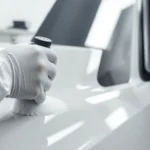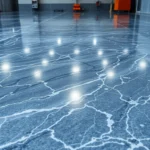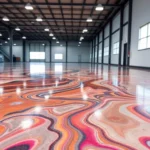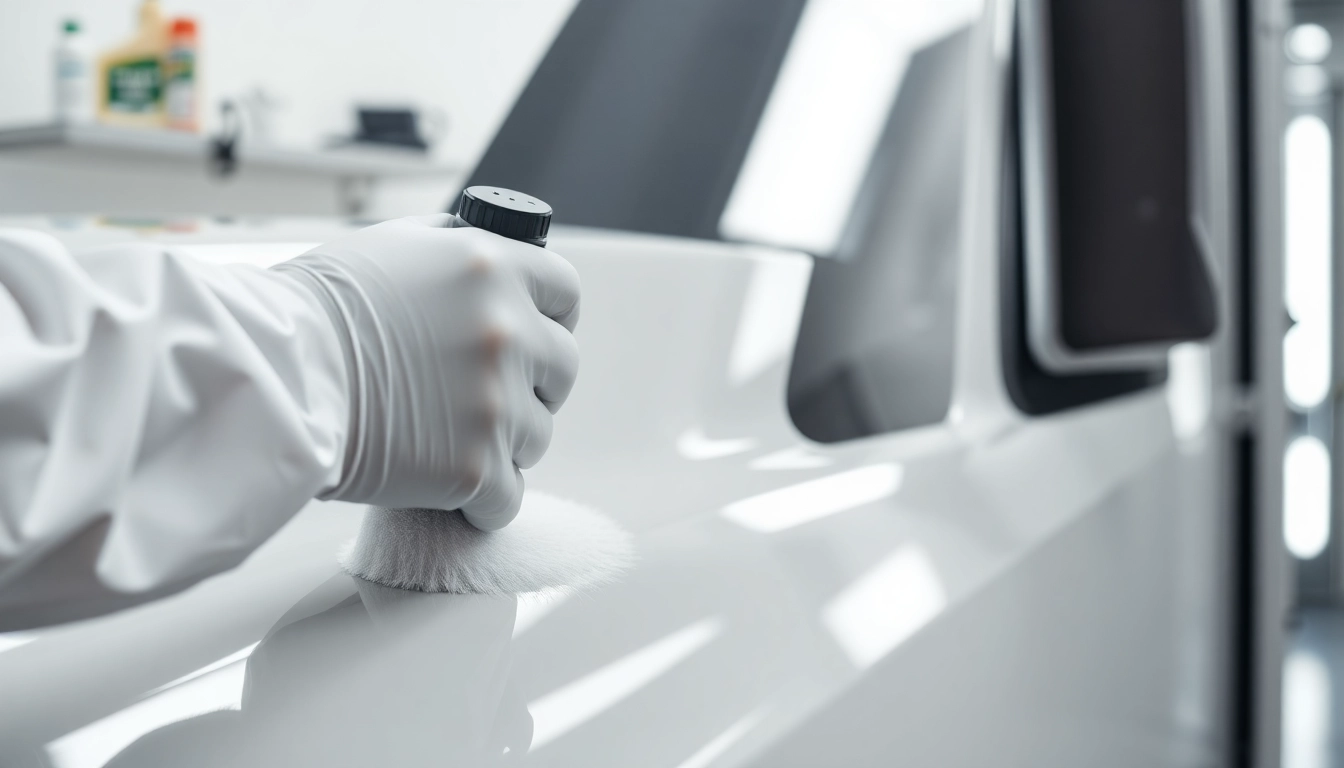Introduction to Marine Vehicle Ceramic Coatings and Polishing
Maintaining the pristine appearance and protecting your vehicle from environmental damage are vital aspects of vehicle care. For boat, van, campervan, and motorhome owners, investing in high-quality surface protection not only preserves aesthetic appeal but also extends the longevity of your investment.
One of the most effective methods to achieve long-lasting protection and a stunning gloss is through Wohnmobil Politursiegelung. This process involves applying a specialized sealant or ceramic coating that creates a durable barrier against UV rays, water spots, dirt, and pollutants, tailored specifically for your vehicle’s material and usage conditions.
Understanding the Basics of Surface Protection
What is a Politursiegelung and Why is It Essential?
A Politursiegelung, or polish sealant, is a protective layer that enhances the visual appearance of your vehicle while providing a robust defense against environmental damage. Unlike regular waxes, which typically wear off within a few months, high-quality sealants and ceramic coatings offer prolonged protection, often lasting several years with proper care.
The significance of a good Politursiegelung lies in its ability to repel water, prevent water spots, reduce the adhesion of dirt and grime, and protect against UV-induced fading. For outdoor vehicles like campers and boats that are exposed to harsh weather, these advantages are critical in preserving the finish and reducing maintenance costs.
Advantages of Premium Wohnmobil Politursiegelung
- Extended Durability: High-grade sealants and ceramic coatings can last up to 5 years or more, making maintenance less frequent.
- Enhanced Gloss and Shine: They restore and maintain a deep, reflective finish that enhances the vehicle’s appearance.
- Protection Against Weather and Contaminants: Shields the surface from UV rays, salt, dirt, bird droppings, and water spots.
- Ease of Cleaning: Surfaces become hydrophobic, meaning water and dirt slide off easily, simplifying cleaning routines.
- Value Preservation: Maintains the resale value of your vehicle by preventing paint degradation and surface wear.
Compared to traditional waxing or polishing, a professionally applied Politursiegelung provides a more resilient and reliable safeguard that withstands the rigors of outdoor exposure.
Comparative Analysis: Versus Other Protective Methods
Waxing vs. Sealants/Ceramics
While waxing is a popular and less expensive method for short-term shine, it requires frequent reapplication—typically every 2-3 months. Sealants and ceramic coatings, however, form a chemical bond with the paint or gelcoat surface, providing a harder, more durable barrier.
Traditional Polishing vs. Polishing and Sealing
Polishing removes surface imperfections and enhances gloss but does not offer long-lasting protection. When combined with sealing or ceramic coating application, polishing becomes a preparatory step that ensures the coating adheres properly and performs optimally.
Choosing the Right Protection for Your Vehicle
The optimal approach depends on your vehicle’s material, exposure level, and desired maintenance interval. For outdoor and frequently used vehicles, investing in a high-quality ceramic coating or advanced Politursiegelung is advisable for maximum benefit.
Preparing and Applying the Wohnmobil Politursiegelung
Step-by-Step Guide for Optimal Results
- Initial Wash: Thoroughly clean the vehicle with a gentle, pH-neutral detergent to remove loose dirt and contaminants.
- Decontamination: Use a clay bar or decontamination spray to eliminate embedded particles, ensuring a smooth surface.
- Drying: Carefully dry with microfibre towels to prevent water spots.
- Paint Correction (Optional): For vehicles with scratches or swirl marks, polish these imperfections with appropriate abrasive compounds before sealing.
- Application of Sealant or Coating: Follow the manufacturer’s instructions—apply evenly using a foam applicator or polishing pad, working in small sections.
- Curing Time: Allow the coating to cure for the specified period, avoiding water contact during this time for maximum adhesion.
Necessary Equipment and Products
Essential tools include high-quality polishing pads, microfibre applicators, decontamination agents, and specific sealants or ceramic coatings suited for your vehicle’s material. Products like professional Politursiegelung kits often contain all necessary components.
Common Application Mistakes and Tips
- Skipping Surface Preparation: Skipping cleaning and decontamination compromises coating longevity.
- Applying in Direct Sunlight or on Hot Surfaces: This can cause the coating to cure unevenly.
- Overapplication: Excess product can lead to streaks and difficulty polishing out residues.
Selecting the Best Product Range for Wohnmobil Politursiegelung
Recommended Sealants, Polishes, and Coating Systems
For comprehensive protection, consider products like BCC Power Sealer or specialized ceramic coatings designed for GFK and painted surfaces. These products provide excellent durability, gloss, and water-repellent properties.
Benefits of Sustainable and High-Performance Coatings
Choosing long-lasting, high-quality formulations reduces the need for frequent re-application and enhances the surface’s resistance to environmental stressors. Well-chosen coatings can even add a layer of UV protection and prevent yellowing or oxidation.
Price-Performance Considerations
While premium products may seem costly initially, their extended lifespan and ease of maintenance offer better value over time. Professional-grade coatings often come with detailed application instructions and guarantees.
Maintaining the Surface After Application
Post-Application Care and Cleaning
After establishing the protective layer, regular gentle washing using microfibre towels and pH-neutral detergents maintains the coating’s effectiveness. Avoid abrasive brushes or aggressive cleaners to prevent damage.
Periodic Inspection and Re-Coating
Periodically inspect for signs of wear or dullness. Depending on exposure, apply a top-up layer or re-coat after several years to sustain optimum protection.
Wartime Tips for Durable Protection
Limit parking under excessive sun, wash the vehicle promptly after salt exposure, and use water-repellent towels to facilitate drying and prevent water spots.
Understanding Ceramic vs. Microsealants and Their Longevity
Differences in Composition and Performance
Ceramic coatings form a durable, glass-like layer through nanotechnology-based silica compounds, providing superior hardness and chemical resistance. Microsealants, such as those based on polymeric resins, offer excellent gloss and water-beading but with slightly shorter lifespan.
Durability and Maintenance Needs
While ceramic coatings can last 3-5 years with proper care, microsealants are typically effective for 6-12 months. Regular washing, avoiding abrasive agents, and gentle reapplication are key to maintaining protective properties.
Expert Recommendations for Optimal Results
For high-value or high-exposure vehicles like motorhomes or boats, investing in a professional ceramic coating ensures longevity and maximum protection. Microsealants are suitable for quick touch-ups and regional protection.
Frequently Asked Questions about Wohnmobil Politursiegelung
How long does a ceramic coating last on a motorhome?
Typically, a high-quality ceramic coating provides 3 to 5 years of protection, depending on application thickness, maintenance routines, and environmental exposure.
Is applying a Politursiegelung complicated for amateurs?
While professional application yields the best results, novice enthusiasts can achieve excellent outcomes by following detailed instructions, using proper equipment, and preparing the surface meticulously.
Can I apply the coating myself or should I hire a professional?
Both options are viable. DIY kits are available and cost-effective, but for maximum durability—especially on large or complex surfaces—professional application is recommended.









